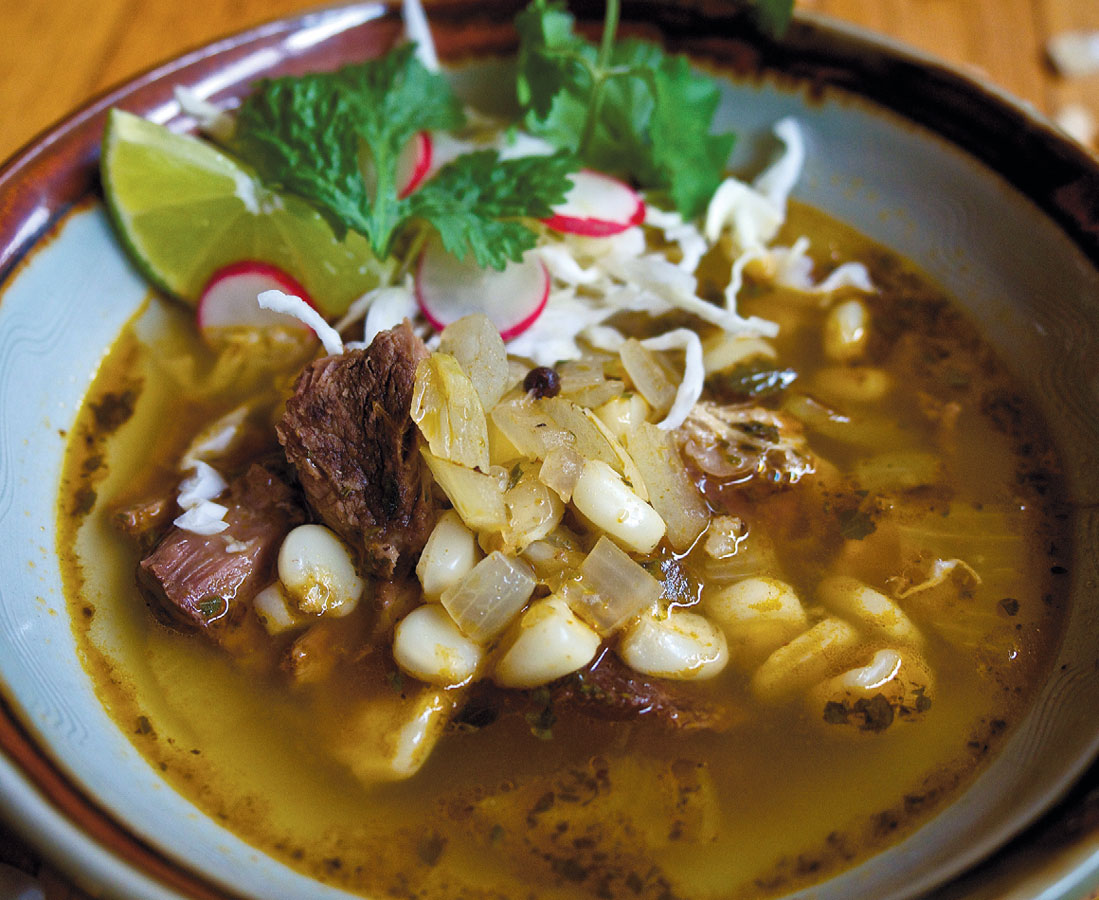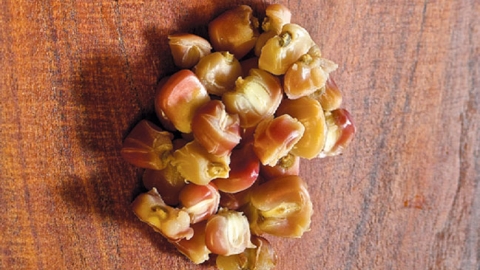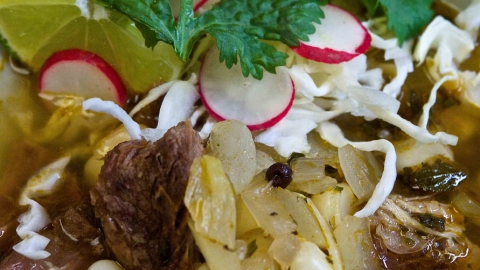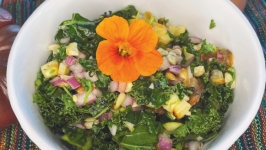Posole and Nixtamal
SON IN HOT WATER AS MOM STEWS OVER POSOLE BURGLARY
Jonathan Ray wanted some of his mom’s posole last week. So much so that, police say, he broke into her Northeast Albuquerque home, made a beeline for the fridge and ran away with a pot of homemade posole. The officer filed an arrest warrant for Ray, and he was picked up Sunday and booked into the county jail, facing a felony charge of residential burglary.
–Albuquerque Journal, Monday, December 7, 2015
So what makes posole worth breaking into Mama’s kitchen for? Why is posole beloved from Sonora to Yucatan, from Michoacån to Coahuila, from San Diego to Chicago, South Texas to Phoenix and beyond?
Wherever the vector of Mexican food has traveled, posole appears. It’s a brothy soup rich with pork, sometimes chicken or beef, and always made with corn nixtamal, topped with cut fresh cabbage, sliced radishes, chopped onion, a squeeze of lime juice and freshly crushed, fragrant Mexican oregano.
The most unusual ingredient in posole is the nixtamal, from the Nahuatl words nextli “ashes” and tamalli “corn dough.” Hard, dry corn kernels are soaked in an alkaline solution of slaked lime/calcium hydroxide, known as cal. This ancient food technique dates back 3,500 years and probably started with ash blown into a pot on an open fire. Nixtamalization softens the corn, enhances its flavor, makes it easy to grind and the resultant ground mass easy to work. It makes corn much more nutritious and digestible, releasing niacin (vitamin B3), amino acids and adding calcium. The process turns plain dry field corn into nixtamal (also known as hominy), which is used to make masa and the familiar products of tortillas, tortilla chips, cornnuts, tamales.
You can buy nixtamal but for really authentic, traditional and absolutely delicious posole, make your own. Once you have the ingredients it’s pretty simple.
Ingredients for Posole (available at all Mexican markets and online)
Cal: Calcium hydroxide, also known as slaked lime or pickling lime, is available at Mexican markets or where canning supplies are sold. Note that slaked lime is totally different from “lime.” Lime (or quick lime) is chemically known as calcium oxide, a much more alkaline and corrosive substance that should not be used in this recipe. A similar caution applies to lye (sodium hydroxide).
Dried Field Corn: There are many varieities and colors available in bulk in most Mexican markets, and all will work in this recipe. If you’re concerned about GMOs, avoid yellow corn, most of which is GMO unless it is labeled organic. No other field corn varieties are GMO at this time.
Nixtamal/Hominy: Corn that has been cooked and soaked in an alkaline bath. Available frozen/defrosted, dried, wet ground (masa), dry ground (hominy grits and maseca), and canned (Juanita’s Mexican Style Hominy). It’s the precursor for tortillas, tortilla chips, cornnuts, tamales and other tortilla-based foods.
Slow Food Lists “Artisanal Masa de Tortilla” on the Ark of Taste
Slow Food USA and Slow Food International nominate heritage foods to be recognized on the Ark of Taste so that they can be recognized and preserved. Artisanal masa de tortilla, made with the nixtamalization process, is one of them. From the Slow Food USA Ark of Taste website:
Nixtamalization is an ancient technology that dates back to Mesoamerica, where maize was first cultivated by the Mayans and Aztecs from the wild grass teosinte that grew in open woodlands. The Aztecs and the Mayans figured out this important first step of processing maize by grinding the kernels by hand on lava stone along the riverbeds. The technology spread with the domestication and cross-pollination of corn and traditional cuisine as Native Americans migrated north into the Southwestern U.S., across the Caribbean, and south to Peru. When Spanish explorers brought maize from the “New World’ to Europe, they failed to introduce the nixtamal process. Consequently, many people suffered from pellagra, a nutritional deficiency caused by the lack of vitamin and malnutrition spread across Europe, Africa and North America in epidemic proportions. Nixtamalization also significantly increases the calcium content of corn; the nutritional benefits of nixtamalization simply cannot be overstated. In the early to mid 1900s, small nixtamal mills opened up across Mexico and the Southwestern U.S. following the invention of the motorized engine. Now, the convenience of instant nixtamalized corn four, produced by mills, has greatly replaced the traditional practice of making fresh nixtamal at home.
While the traditional practice of making fresh nixtamal from native heirloom corn has been passed down over the years, it is a lost art not well understood outside Native American and Hispanic communities. What was once a daily ritual practice of providing fresh hominy and masa used as a base for many dishes, has been largely replaced by the convenience of industrial nixtamal production, complicated by the omnipresence of GMO contaminants, the extent of which are unclear... It is important to preserve the traditional art of nixtamalization in terms of protecting biodiversity, supporting sustainable agriculture and promoting the use of native heirloom corn varieties.










